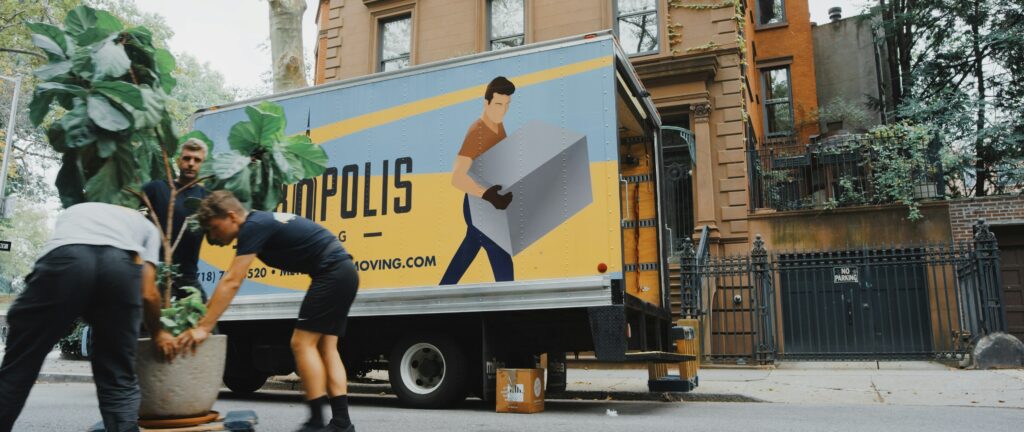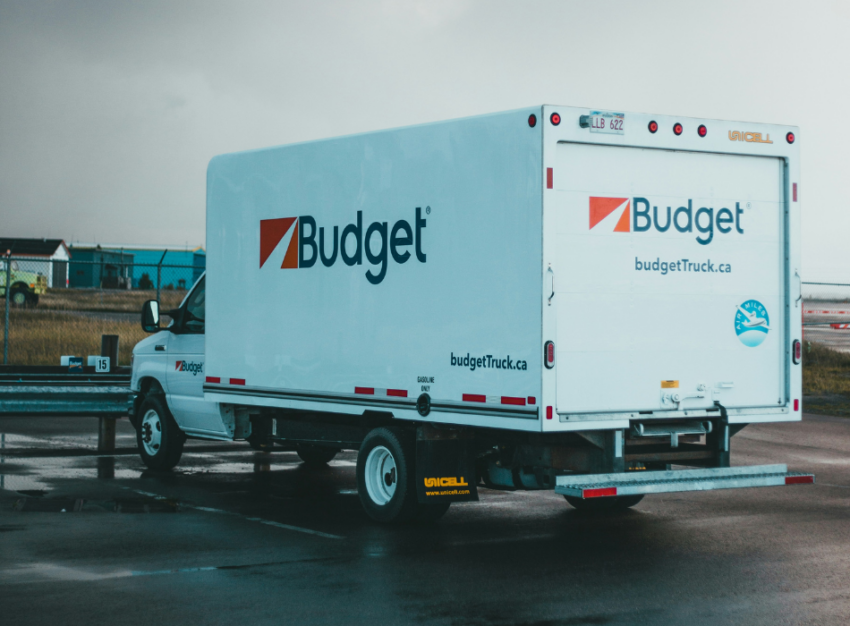When I moved between apartments in Halifax, I hired a moving company because I didn’t have a car or a friend with a truck. On moving day, I ended up walking back and forth several times between the two apartments to pick up my keys, clean my first apartment, and pick up perishable food and any remaining items. It was about a 30-minute walk each way, but there was no good bus route between the two apartments. Now, I’m not sure how I had that much energy—especially given that afterwards I walked to get groceries and other supplies!
Apart from walking and saving my moving boxes in case I would need them again, I didn’t specifically think about making the move sustainable.
Yet we know that moving uses significant resources and generates tons of waste, not to mention greenhouse gas emissions from all the driving. According to estimates by moveBuddha, moving Americans use approximately 900 million cardboard boxes and 353 million gallons of fuel per year.
Here are some steps you can take to have a sustainable move.
Sustainable moving tips
From using reusable moving boxes to choosing a green moving company and planning your trips efficiently, there are several ways to be sustainable throughout the moving process.
Declutter
Moving is the perfect time to declutter and think whether you really need those kitchen utensils you haven’t used in months. Besides helping with peace of mind through simplifying your living environment, decluttering means you’ll have less stuff to deal with on moving day. You may be able to rent a smaller moving truck or make fewer trips. Plus, giving away things that you don’t need gives other people the chance to enjoy them.
When decluttering, there are a few options for getting rid of items sustainably, including selling, giving away for free, donating and (as a last resort) disposing of the items responsibly. Learn more in my blog post on the topic.
Consider your moving boxes

Moving boxes are surprisingly expensive and have a limited lifespan. The best moving boxes are the ones that you already own. Chances are you already need to move bags like suitcases, tote bags and backpacks—try stuffing these containers with clothes and other items. If you need to move a dresser, why not fill the drawers?
When it comes to traditional cardboard moving boxes, hang on to boxes from previous moves, plus ones from online shopping. You can also try asking friends and family and in local Facebook and free groups. Grocery stores, liquor stores and restaurants may also give away boxes for free. Used (and free) is best, but if you’re buying new boxes, look for ones made from recycled cardboard.
Another option that’s increasingly common—and better for the planet—is renting reusable moving boxes. These boxes are typically made of plastic, but they can be used many times. You also don’t need to use tape since the boxes often have snap lids.
Consider your packing materials
Moving uses various materials besides boxes, including tape and packing materials like packing peanuts, bubble wrap and packing paper. These materials help keep fragile items safe, but they’re typically only used once then thrown away.
Similarly to with moving boxes, you can save possible moving materials—in my closet, I keep old paper bags, plastic bags and tissue paper in case they’re useful for anything. You can also use clothes and towels to wrap breakable items and old newspaper to replace packing paper.
There are a few sustainable alternatives for packing materials. Look for materials that are made of recycled content and are recyclable or biodegradable, like paper tape, cloth furniture pads or biodegradable packing peanuts.
Find a green moving company

If you plan to use a moving company, ask them about their sustainability practices. An increasing number of moving companies keep sustainability in mind. These companies may use reusable moving bins and eco-friendly packing materials. They can also offer guidance on donating items and other ways to reduce the environmental impact of your move.
Green moving companies often use biodiesel to power their trucks or may even use electric vehicles. They’re often socially responsible in other ways as well, such as by donating to or volunteering with local charities, and paying their employees a living wage.
Pack and drive efficiently
Unless you’re using an electric vehicle, each trip back and forth uses gas and pollutes. Pack your moving truck or car efficiently to reduce the number of trips. As well, try to combine trips instead of doing multiple small trips. For example, when you’re picking up your keys, you can start dropping off items. Look, as well, for the most efficient route between your starting point and your new place.
Ensure your essentials are readily accessible
Be strategic about your packing to ensure that you have access to your essential items and don’t need to buy new ones or use disposable ones. This includes gathering items to have with you while moving, like a water bottle, snacks and valuables.
As well, prepare an essentials box so that you can easily access necessary items upon arrival at your new place. Think basic toiletries, a few items of clothing, and a few plates and cutlery—plus whatever else you’d have trouble living without. Detailed labels on boxes are helpful as well so that you know where to find things.
Greening the moving process
Moving isn’t known for being particularly sustainable. Between the piles of moving boxes and packing materials and the multiple trips by moving truck, the process is resource-intensive and polluting. By targeting specific stages in the moving process, you can reduce the environmental impact of moving and make your move that much greener.
I want to know: How do you move between apartments/houses in a sustainable way?
Check out the first post in this series, which discusses how to get rid of items responsibly when moving.
Categories and tags:
Share this post:

